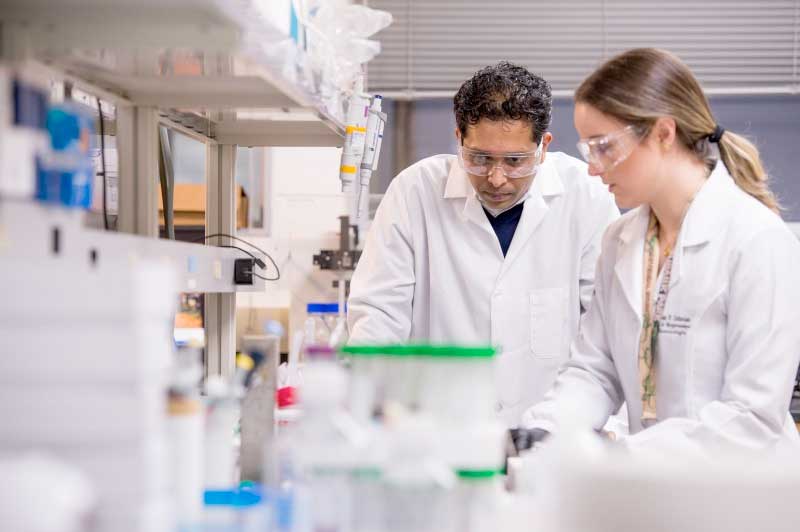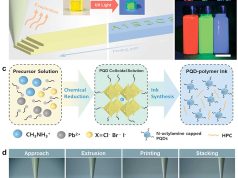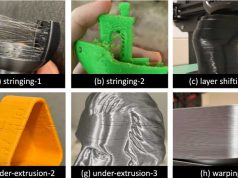A team led by researchers at Rensselaer Polytechnic Institute has 3D printed hair follicles in human skin tissue grown in the laboratory. This is the first time researchers have used the technology to create hair follicles, which play an important role in skin healing and function.
The findings, published in the journal Science Advances, could have applications in regenerative medicine and drug testing, although the development of skin grafts that grow hair is still several years away.
“Our work is a proof-of-concept that hair follicle structures can be created in a highly precise, reproducible way using 3D-bioprinting. This kind of automated process is needed to make future biomanufacturing of skin possible,” said Pankaj Karande, Ph.D., an associate professor of chemical and biological engineering and a member of Rensselaer’s Shirley Ann Jackson, Ph.D. Center for Biotechnology and Interdisciplinary Studies, who led the study.
“The reconstruction of hair follicles using human-derived cells has historically been a challenge. Some studies have shown that if these cells are cultured in a three-dimensional environment, they can potentially originate new hair follicles or hair shafts, and our study builds on this work,” Karande said.
“Right now, contemporary skin models — the engineered structures that mimic human skin — are quite simple. Increasing their complexity by adding hair follicles would give us even more information about how skin interacts with topical products,” said Carolina Catarino, Ph.D., first author of the study, who earned her doctorate at Rensselaer and is now a researcher developing new skin testing methods at Grupo Boticário, a cosmetics company in her home country of Brazil.
The researchers created the follicle-bearing skin tissue using 3D printing techniques adapted for cellular printing. They began by growing skin and follicle cells in the lab until enough printable cells were available. The researchers then mixed each cell type with proteins and other materials to create the “bio-ink” for the printer. Using an extremely thin needle, the printer deposits the bio-ink in layers and simultaneously creates channels for the hair cells. Over time, the skin cells migrate to these channels surrounding the hair cells, mirroring the follicle structures in real skin.
“Dr. Karande’s lab is at the forefront of skin tissue engineering. This team has already successfully printed skin with working blood vessels, and this latest research is an exciting next step in developing and testing better treatments for burns and other skin conditions,” said Deepak Vashishth, Ph.D., director of the Shirley Ann Jackson, Ph.D. Center for Biotechnology and Interdisciplinary Studies.
“Dr. Karande’s work is a great example of advances being made by RPI researchers at the interface of engineering and life sciences with impact on human health,” said Shekhar Garde, Ph.D., dean of Rensselaer’s School of Engineering. “Bringing multichannel 3-D printing to biological realm is opening exciting opportunities that would have been hard to imagine in the past.”
Currently, these tissues have a lifespan of two to three weeks, which is not long enough for hair shafts to develop. The research team is working on extending this period to allow the hair follicles to mature further, paving the way for their use in drug tests and skin grafts.
Subscribe to our Newsletter
3DPresso is a weekly newsletter that links to the most exciting global stories from the 3D printing and additive manufacturing industry.
























